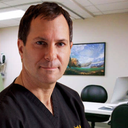Thank you for your question MIssybee. I understand your concern. Botox is a purified protein used to address wrinkles associated with facial expression. When injected into the skin Botox will relax the muscles and smoothen out the overlying wrinkles. The most common areas of treatment are in the upper face. These include the horizontal lines seen on the upper forehead when one raises the brows, the vertical lines seen between the brows when one frowns (frown lines), and the crow's feet seen around the eyes when one smiles.It is difficult to make an assessment in the absence of consistent photographs before and after in the same lighting and angles for comparison. However, I hope the information provided here is useful.Botox can be placed in the masseter muscle in the lower face to contour the lower face and address pain associated with TMJ. In this area 20-40 units of Botox are used per side. Depending on the reason for the enlargement of the muscle, permanent results may be achieved. For example, some people have a habit of grinding, clenching, or biting their teeth subconsciously. Often times this happens in their sleep when they are not aware of it. Botox placed in this muscle will relax the muscle and the grinding, clenching, and/or biting will decrease. This will reduce the size of the muscle. If the brain gets accustomed to this and the person stops grinding, clenching, or biting, then the muscle will not become enlarged or as enlarged again. However, if the habit starts again, the muscle will likely get larger.





